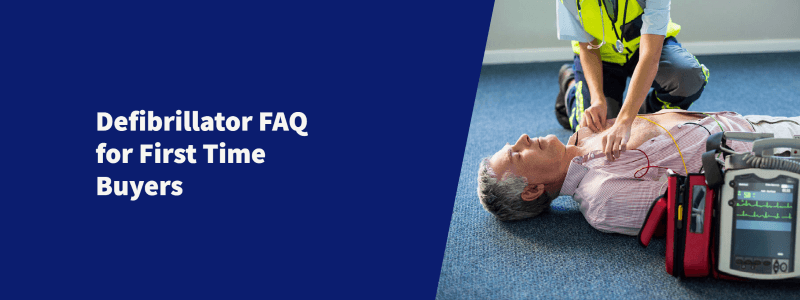This week is Heart Rhythm Week, a week dedicated to syncope and reflex anoxic seizures. Syncope is a condition of loss of consciousness due to a lack of blood to the brain. This causes patients to pass out, and usually comes from low blood pressure. While we support this cause, we’re choosing to use Heart Rhythm Week to discuss defibrillator availability, and discuss the importance of knowing where your nearest defibrillator is.
Quick use of a defibrillator on somebody who is suffering from cardiac arrest can often be the difference between life or death. But to be able to use a defibrillator in the time needed, there needs to be one accessible in all areas of the country. Defibrillator access has improved across the last decade, with it widely regarded that there are over 10,000 machines in the U.K. today. But in that figure, there are areas in the country that are vastly under-resourced, according to data from The National Defibrillator Database.
6 Areas of the Country that Need Greater Defib Access
To discover more information about the geographical location of defibrillators, we analysed the data from the countries largest defibrillator database. This information has come from the National Defibrillator Database, an online resource that collects data of which postcodes in the U.K. have a defibrillator, and where to find them. While we presume not every defibrillator is logged with the resource, it is the largest collection of data in the U.K. With this in mind, here are 7 locations which have poor access to defibrillators.
Exmouth – Paignton – 1 defibrillator across 32 miles.
The calculation was done travelling down the East of the country, from Exmouth to Paignton, using a large area around the 32 mile stretch that had access to just one defibrillator. This is clearly not enough for the area.
Edinburgh – Amble – 5 defibrillators across a 95 mile stretch.
Averaging one AED every 19 miles, this is clearly not enough machines to safely cover the area. While Scotland is a more rural country than England, often with a further between towns, this number of defibrillators still isn’t enough to cover the area, especially the city of Edinburgh.
Oban – Durness – 0 defibrillators across a 209 mile stretch.
The largest area with the least number of defibrillators is the western stretch of land between Oban and Durness towards the peak of the country. While many of the towns in this region will post numbers ranging from 8,000 residents to a mere 400, towns and cities east of this area, such as Inverness, also have 0 registered defibrillators. This is a dangerous president and needs more investment to ensure due medical resource is available across the towns of Northern Scotland.
Newport – Abergavenny – 1 defibrillator in 20 miles (in Newport).
The south of Wales is another area that boasts a lack of defibrillators, with just one between the towns of Newport and Abergavenny. For context, with no traffic the drive from Abergavenny to Newport is 35 minutes, with a round trip of over an hour. This is far too long a time to expect to find a defibrillator, and in this time the patient will have lost their battle with cardiac arrest because of a lack of resource in the town.
Newquay – Land’s End, Cornwall – 12 defibrillators across 43 miles.
This stock of defibrillators is fairly large for our list, but make no mistake this still isn’t enough to satisfy the need if someone goes into cardiac arrest more than a few minutes from these defibrillators. The population of Cornwall is nearly 600,000 people, and while this doesn’t take up the entirety of the county, if you take into consideration that most of these areas are tourist traps, then it becomes even more shocking that there’s only 12 places you can go and find a defibrillator in the event of an emergency.
Skegness – Boston – 5 defibrillators over 46 miles of land.
We’ve calculated this area as a simple drive from one town to another, but this also goes across the country as far as Market Rasen, so covers a large mass of ground. This area is arguably one of the least equipped areas, as there are many towns between these two mentioned checkpoints that have thousands of residents and no noted defibrillator records. Regardless of whether there are unrecorded machines, if people don’t know where they are, and they aren’t recorded, they’re almost useless.
These are 6 areas of the country that we consider to have vastly too few AED machines for their size or population. There is still a lot of work to do to get the country up and running with defibrillators, and access is a big problem. If used in the first minute of arrest, AED and CPR can return a survival rate of 90%. Yet every minute without defibrillation the patients chances of survival reduce 10%. Showing just how important immediate intervention is.
For more information on defibrillators, we have a wealth of information. If you are looking for an AED that is good value for money and high quality, our range fit the bill. For further information, you can call our team of experts on 0330 162 6924 or see our full range of Defibrillators & AEDs.


